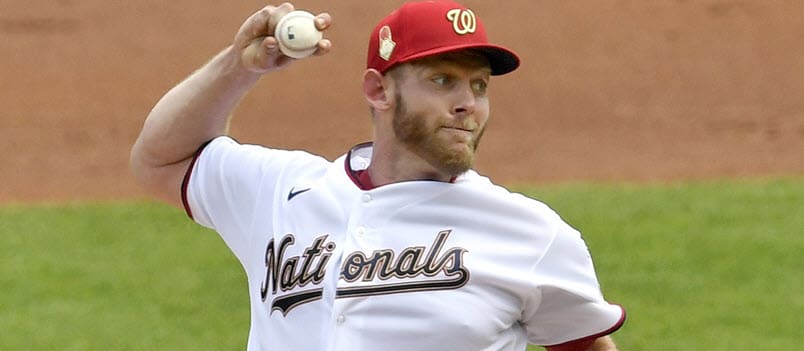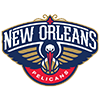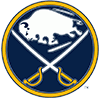Draft Day always brings an infusion of new, exciting arms into professional baseball and into the spotlight for fantasy baseball junkies like us. I'm not crazy about having Draft Day and the Future's Game on the same weekend. I'd prefer to spread out the fun across multiple days. However, as usual, I settled in the other night with iced tea and snacks, notebook in hand, and a list of pitchers I wanted to check in on. Where would they go? What would the film clips show? What would other analysts have to say? What a night, right? Obviously, this is focused on keeper and dynasty formats, but some of the top guys will be on redraft fantasy draft boards sooner than you might think. Maybe the biggest obstacle to assessing pitchers in this draft was/is that ever-looming injury factor. It seems like all the top college arms just underwent Tommy John surgery.
Some general observations from Draft Day
I thought this draft was perhaps a bit deeper with regard to high school arms. While I don't immediately see a standout generational talent in this year's draft, there are a few, two in particular, whom I consider very interesting. High school arms, even the really good ones, have always been considered riskier, and I think that continues to be a factor. There are injury risks, and the challenge of accurately predicting the ultimate ceiling of a younger pitcher, so many teams focus on the top college prospects unless they feel they
Draft Day always brings an infusion of new, exciting arms into professional baseball and into the spotlight for fantasy baseball junkies like us. I'm not crazy about having Draft Day and the Future's Game on the same weekend. I'd prefer to spread out the fun across multiple days. However, as usual, I settled in the other night with iced tea and snacks, notebook in hand, and a list of pitchers I wanted to check in on. Where would they go? What would the film clips show? What would other analysts have to say? What a night, right? Obviously, this is focused on keeper and dynasty formats, but some of the top guys will be on redraft fantasy draft boards sooner than you might think. Maybe the biggest obstacle to assessing pitchers in this draft was/is that ever-looming injury factor. It seems like all the top college arms just underwent Tommy John surgery.
Some general observations from Draft Day
I thought this draft was perhaps a bit deeper with regard to high school arms. While I don't immediately see a standout generational talent in this year's draft, there are a few, two in particular, whom I consider very interesting. High school arms, even the really good ones, have always been considered riskier, and I think that continues to be a factor. There are injury risks, and the challenge of accurately predicting the ultimate ceiling of a younger pitcher, so many teams focus on the top college prospects unless they feel they can compete right now. Besides, with an increasingly shallow pool of quality pitchers at the MLB level, teams are desperately seeking help on the mound who can help as soon as possible, and obviously, college arms are closer.
I think, and it's just my opinion, that the current trend in the approach to pitching is now becoming ever more prominent in both the high school and college pitchers arriving on draft day. Everyone looks for velocity with a hard slider often next on the list, so a pitching prospect with a more advanced repertoire often moves higher on my list. Don't get me wrong, I love the big arms, too, but a reliable change-up and/or curveball, with some command usually draws my immediate attention. And, perhaps I'm just hoping, but teams might be starting to reconsider neglecting the finer points of the pitching profession. I really hope we see actual learning the art brought back.
Okay, let's take a look at the cream of the 2022 draft class
Here are a few higher-ceiling arms I think you should add to your watch list:
- Kumar Rocker (Texas Rangers – third overall) – I really did not know what to think of Rocker prior to draft day. Not because of his skillset; there is no doubt he can be a frontline starting pitcher if he's healthy. Ahhh. Healthy? What I lacked to make my assessment was access to his recent medical records. Last year the Mets selected him 10th overall, but he flunked the physical, didn't sign and ended up having shoulder surgery before pitching in the independent league. I'm going to assume the Rangers were able to see his medical records, and they decided he was worth the risk. Now, the 6-foot-5 righty can bring his plus fastball, slider, and change-up to a reunion with former Vanderbilt teammate Jack Leiter (the top pitcher in last year's draft). His mound presence and competitiveness are also pluses, so both he and Leiter could be in Texas relatively soon.
- Dylan Lesko (San Diego Padres – 15th overall) – I usually try to find college pitchers to put at the top of the draft class watch list under the assumption they are likely to be closer to the majors and, being older, they are easier to project with regard to ceiling, but I was preparing to make an exception with Lesko. The confidence the Rangers showed in Rocker, and Lesko undergoing Tommy John surgery in April moved him down to the second slot. He has a very good mid-90s fastball, but what sets him apart is an exceptional change-up. Honestly, when I first watched him, I thought he must be a college arm. You just don't see a change like his from a high school kid. He won't pitch until 2023, but given his advanced repertoire, he could move up rather quickly. Recovery from TJ surgery isn't usually a concern, so he is definitely a solid dynasty target.
- Brandon Barriera (Toronto Blue Jays – 23rd overall) – Barriera really jumped up on my watch list as I reviewed videos of his pitching. As a southpaw high schooler, erratic command would be expected, but he displayed such a clean and simple motion. With his repeatable arm-slot he was throwing his whole repertoire for strikes. His stuff was very good, not necessarily great, but with those mechanics I think the best is yet to come from him. He's already sitting mid-90s with his fastball, and he throws a curve, slider and change-up that are decent now, and show promise. He already trusts his stuff, and attacks hitters, which really underscores a favorable mound presence that also goes in the plus column. In short, he checks pretty much all the boxes.
- Cooper Hjerpe (St. Louis Cardinals – 22nd overall) – If you're a fan of funky, Hjerpe could be your guy. Deception is a part of the game, and this lefty from Oregon State slings the ball from a low arm slot, making it very tough for hitters to pick up. That's how he rung up 161 strikeouts in just 103 innings this year. Do note that it's not all deception, he has pretty good stuff with a lot of movement, too. The Cardinals look for college arms that can potentially contribute fairly soon, and Hjerpe fits that profile. His command is still a bit spotty, but it appears to be steadily improving, and if you are skittish about Rocker's long-term health, I would put this guy at the top of the college pitcher list. He could probably be a strong left-handed reliever right away, but I would guess the Cards will give him a shot at starting, and I see him as a solid mid-rotation arm in the fairly near future.
- Gabriel Hughes (Colorado Rockies – 10th overall) – Here's another college arm with a pretty good skillset, but Hughes is going to an organization that can make it difficult to succeed. That said, there are two things I think make it at least possible to handle pitching half of your starts in Coors Field, and he has both. First, command is essential, as a pitcher can't afford to always pitch behind in the count or to put extra runners on base, and command is his strong suit. He throws his pretty decent arsenal for strikes. Second, mental makeup is important. I think Hughes has the competitive demeanor to possibly work his way out of jams. It won't be easy, but bravehearted fantasy owners might still consider him.
There were a few other pitchers worth monitoring – like southpaw Connor Prielipp (48th overall to the Twins), who I thought might have been the first pitcher to go before blowing his arm out and Cade Horton (seventh overall to the Cubs), who surprised me going that high. He was certainly impressive in the College World Series but hadn't shown all that much before. Landon Sims (34th overall to the Diamondbacks), whom I saw a couple years ago as an intriguing relief pitcher at Mississippi State, and Noah Schultz (26th overall to the White Sox), who is raw but has a pretty high ceiling.
Some Notable Rotation Ramblings:
- Just when you thought things were finally getting better. Boston's Chris Sale only made it into the first inning of his second 2022 start before taking a line drive off his pitching hand and breaking his pinky finger. He had surgery earlier this week, which will keep him out until at least late August or early September.
- It seems the Nationals' Stephen Strasburg is now considered unlikely to return this season. He has made just eight starts in three years – just one this year after undergoing thoracic outlet syndrome surgery. Once my top pitcher, the 33-year-old is now a huge risk and might be nearing an end to a magnificent career.
- A popular question is, if you could have any pitcher for the future, who would it be? It's a tough question with all the good ones out there, but a very serious consideration would be the White Sox' Dylan Cease. He doesn't really know how good he is, not quite yet. If there is any way, go get him and enjoy the ride.
- Quietly rounding into form, San Diego's Mike Clevinger might be hinting at a very big second half. I have watched parts of a few starts since he came off the IL, and for the most part, each has been a bit more promising than the last. If he's available, I'm buying, but you better hurry. Better days are imminent.
- Shohei Ohtani is a better pitcher than hitter. There, I said it. If he pitched exclusively, he would be the best pitcher in the game today (he's close as it is). He opted not to pitch in the All-Star game, but his fantasy owners can rejoice, as that means he will be able to start the team's first game following the break.
Endgame Odyssey:
The definition of a great closer is that guy who allows you to change the channel as soon as he enters the game. It's over. For a very long time the leader of that pack has been Milwaukee's Josh Hader. I haven't watched him much. There was no need, until recently. I'm not sure what's wrong. I have to wonder if there is an injury involved. The next guy on my "Goodnight, the party's over." list is Chicago's Liam Hendriks. He has the occasional blip, but the next dozen or more times out he is untouchable. Not to be confused with effective closers, the Reds' Hunter Strickland had a brief turn, but most recently, Alexis Diaz picked up a save just before the break. Diaz has the best stuff in the Cincinnati pen, but he's a mediocre add unless you are desperate. The Angels say that Raisel Iglesias will remain their closer despite a handful of weak outings with a pretty significant drop in velocity. If he doesn't bounce back quickly when play resumes, Ryan Tepera might be the likely alternative, but he's not a strong candidate.






































